We live in a very complex universe, and as far as one can remember, men have always wanted to know everything about it: where do we come from? what is our world made of? To answer these questions, sciences were developped, and among them, theoretical physics: using mathematics to describe certain aspects of Nature. From Isaac Newton’s mechanics and classical field theory to Einstein’s relativity principle and quantum mechanics, a large variety of the components of our universe have been studied back and forth and a vast scope of physical phenomena can be explained with what we call fundamental forces. What is a force? What defines those fundamental forces? With this brief introduction, we will try to figure out under which forms these forces exist, how they are linked to each other. Finally, we will talk a little bit about theories trying to unify these different notions of forces, like string theory for instance.
A force is what changes or tends to change a state of rest or motion in an object. Force causes objects to accelerate, change direction, or change shape among other things. For instance, when you push an object, you exert a force on it. Another example, when you blow on a feather, you exert a force on it.
Newton’s mechanics: discovering gravity as an instantaneous force
The most puzzling and intriguing moving things visible to humans have always been the sun, the moon, the planets and the stars we can see in the night sky. Newton created a mathematical model that not only described the observed motions of planets and stars. His model also described the motion of swinging weights and falling apples (like the one he received on his head while taking a power nap!), through one concept: the gravitational force.
Well, it is quite simple: objects that have mass pull on each other, but in a way such that they never push each other apart.
First, it depends on the masses of the two objects: the greater the mass, the greater the intensity of the force. Second, it depends on the distance between these objects: the smaller the distance, the greater the force. This is what makes everything on Earth stick to it, and this is also why the Moon revolves around the Earth and why the Earth revolves around the Sun.
In Newton’s model, gravity is an instantaneous force: it means that every objects exerts instantly a gravitational force on the other. In other words, there is no delay before you undergo gravity.
Propagating forces: classical field theory and electromagnetism
According to the current understanding of physics, forces are not necessarily transmitted directly between objects, but instead can also be transmitted by intermediary entities called fields. Among the most famous scientists in field theory, Maxwell stands out with his theory of electromagnetism. In 1820 Hans Christian Orsted discovered that electric currents exerted forces on magnets, while in 1831, Michael Faraday made the observation that time-varying magnetic fields could induce electric currents. Until then, electricity and magnetism had been thought of as unrelated phenomena. In 1864, Maxwell published his famous paper on a dynamical theory of the electromagnetic field. This was the first example of a theory that was able to encompass previous separate field theories (namely electricity and magnetism) to provide a unifying theory of electromagnetism.
Gravity as a propagating force: Einstein and relativity
Before Einstein, some scientists tried to measure the relative speed of light by measuring the speed of starlight arriving to Earth. The problem they had was that no matter which direction Earth was moving towards, the measurements were all the same!
Einstein said this happens because there is something unexpected about distance and time. He thought that as the Earth moves through space, our clocks slow down. Any clock used to measure the speed of light is off by exactly the right amount to make light seem to be moving at its regular speed. Also, Einstein said that as the Earth moves through space, our measuring devices change length. So, any measuring device used to measure the speed of light is off by exactly the right amount to make the starlight seem to be moving at its regular speed.
Einstein managed to unify our notions of space and time into an entity we now call spacetime. In 1907, he stated that without the presence of matter, the universe would be made of a flat fabric. But in the presence of matter, like the sun, gravity propagates at the speed of light and causes the fabric of the universe to curve itself following 4 dimensions (three of space and one of time). This statement was the principle of general relativity, and expands the idea of special relativity. Among other results, Einstein stated what probably is the most famous equation in the world (alongside 1+1=2) which is …..E=MC2!
Yes ! In 2011, the NASA launched a satellite to verify the geodesic effect, which is the warping of space and time of space caused by the presence of a gravitational body, the Earth in our case.
So now, we have seen that Newton was wrong: gravity was not an instantaneous force, but instead is a force propagating through a field, making space and time curve! Nice, isn’t it?
Quantum mechanics: duality wave/particle for the forces
To keep it simple, quantum mechanics is the science of the behavior of things at an atomic level. Quantum is a Latin word that means ‘how much’. So a quantum of energy is a specific amount of energy.
Wave-particle duality of light
In 1690 Huygens theorized that light was composed of waves, while in 1704 Newton explained that light was made of particles. Experiments supported each of their theories. However, neither a completely-particle theory nor a completely-wave theory could explain all of the phenomena associated with light! So scientists began to think of light as both a particle and a wave.
Light and matter exist as particles; what behaves like a wave is the probability of where that particle will be. The reason light sometimes appears to act as a wave is because we are noticing the accumulation of many of the light particles distributed over the probabilities of where each particle could be.
For instance, suppose we had a dart-throwing machine that had a 5% chance of hitting the bulls-eye and a 95% chance of hitting the outer ring and no chance of hitting any other place on the dart board. Now, suppose we let the machine throw 100 darts, keeping all of them stuck in the board. We can see each individual dart (so we know they behave like a particle) but we can also see a pattern on the board of a large ring of darts surrounding a small cluster in the middle. This pattern is the accumulation of the individual darts over the probabilities of where each dart could have landed, and represents the ‘wavelike’ behavior of the darts. Get it?
Particle physics: forces transmitted by particles
Particle physics is the science of…
Particles, right. But what are particles? The constituents of what we usually refer to as matter or radiation, i.e the really small pieces that build up the world around us. This branch of science aims at identifying fundamental particles, that is to say particles that are not a congregation of other smaller particles.
Let’s take our microscope and make a zoom !
- Everything around us is a huge amount of molecules,the smallest amount of a chemical substance that can exist.
- Molecules are made up of atoms that are stuck together in a particular shape or form.
- The atom is the basic unit that makes up all matter, and is made of 3 main particles: electrons orbiting around a nucleus where we can find protons and neutrons.
- Electrons are elementary particle, but protons and neutrons are not: they are made of elementary particles called quarks
To sum it up, let’s have a look at the picture below!
Because of the three fundamental forces (yet known):
- The strong nuclear force: it is what holds the nucleus together, by acting between the quarks that protons and neutrons are made of;
- The weak nuclear force: it is responsible for what we call the beta decay, a sort of radiation, i.e when energy moves in space away from a source;
- The electromagnetic force that links the electrons to the nucleus of the atoms.
Exactly! Scientists managed to separate elementary particles into 2 categories:
- Gauge bosons are carrier particles for three of the four fundamental forces (all but gravity). For instance the electromagnetic force is carried by photons, which are the elementary particles that light is made of.
- Fermions are the particles that make up matter.
Yes! That was done under the representation of what we call the Standard Model, than I am giving just below:
No, and that is the big problem about it… we have 3 out of 4 fundamental forces explained, but we do not have a precise idea of gravity at the smallest scale. Indeed, as particles’ mass is infinitely small, and as they are close, gravity is really weak at a small scale: looking for it would be like finding a needle in a haystack!
A unique force? Some attempts at unification
Some scientists tried to derive some unifying theories: trying to gather all the fundamental forces under a common concept…unfortunately not successfully!
Kaluza-Klein Theory
During the 1920s, two physicists, Kaluza and Klein, both observed that it might be possible to represent both gravitation and electromagnetism (the only two fundamental forces known at that time) under a same concept…a space with extra dimensions!
Their idea was that in addition to the three dimensions commonly observed, there would exist other dimensions, but these ones would be finite, that is to say not infinitely extended.
Because it would be curled on itself!
Okay, I will give you a small example in 2 dimensions. Imagine a very small ant allowed to move on an very large infinite cable in only one dimension (along the length of the cable). It would not be aware of the small but finite dimension curled around the cable. Well, Kaluza and Klein use the same idea for us: we would evolve in the 3 infinite dimensions, while traversing and experiencing lots of small curled up dimensions!
In the theory they developped, they showed that only gravity could be considered as a fundamental force, and not the electromagnetism. How? Well, to keep it simple, when you do the maths on a graviton in 4 dimensions, you get that it splits into two other particles and that those particles satisfy the equations of…electromagnetism!
Unfortunately, this theory was not satisfactory due to the same problems arising with the knowledge of gravity: there was no known consistent quantum theory of gravity even in three spatial dimensions, and it turned out that in higher dimensions the difficulty in constructing such a theory was even harder.
Grand Unification
This theory rose in the 1970s with scientists stating that 3 fundamental forces (electromagnetic force, weak and string force) would be different manifestations of a common origin, by using a strong property of quantum field theory: the behavior of forces involved strongly depend on the energy levels of the particles involved.
Basically, at a high enough level of energy, there would be a single force unifying them all, but if we go down in energy levels, this force would split in 3 distinct forces. The problem with this is that the energy level required to consider this is that the magnitude of the energy required is 10 times what we can do in the biggest particles accelerator right now! Besides, this theory completely ignores gravity, which is still the missing link in explaining everything…
Forces transmitted via vibrations: String Theory
The essential idea behind string theory is that all of the different ‘fundamental ‘ particles of the Standard Model are different consequences of one basic element: a string.
Common sense makes us think that elementary particles like electrons for instance do not have an internal structure… but how can it move ? Well, the reason given with string theory is quite simple : because it is made of a huge amount of tiny strings, so small that even our most powerful microscope would not allow us to observe, and those strings are vibrating ! And so, the same way strings on a musical instrument vibrating at different patterns would create different sounds, these tiny strings vibrate at different patterns to produce a force creating different elementary particles, like quarks, photons, gravitons, etc.
Exactly ! And the beautiful thing about it is that it is the first real unification of theoretical physics ! How ? Well, because with this theory, we state that matter particles like electrons and quarks, and particles involved in the forces of nature, like photons and gravitons, are made the same way, with strings !
Well, it is still a work in progress. In the CERN in Switzerland, a large particle collider will be the center of this experiment. It is composed of a very large tube, where small particles are moving at the speed of light towards others in order to create head-on collisions. If enough energy is released, if string theory is correct, then some particles should be « thrown » into those extra-dimensions. To verify the theory, scientists would compare the energy levels measured before and after the collisions : if the after-level is less than the before level, then some particles have been launched into those extra-dimensions !
Summary and conclusions
Well, after this rollercoaster of concepts, what to remember? In a nutshell, that since Newton lots of things have been discovered and understood: mainly that we can gather everything around us (from what makes us at the smallest scale to the movement of planets) as consequences of fundamental forces. Those forces can be:
- instantaneous (Newton’s gravity);
- propagating with fields and waves (Einstein’s relativity);
- carried by particles (quantum physics);
- carried by particles but behaving like a wave (Gauge bosons, photon);
- vibrations (string theory).
The problem is in the unification of those forces under a common concept, especially because of gravity: today scientists still do not have a proper idea of quantum gravity… this is where string theory enters the stage! But with great expectations come really difficult mathematics: string theory is still a work in progress, and it will take years to understand if this is leading us somewhere!
That’s the beauty of it! Neverending challenges like this is what makes scientists think further and further, and what makes scientific community such a stimulating place to live in! As a proof, I give you the photo of the fifth Solvay conference of 1927, which basically gathered the greatest scientists of the last century.




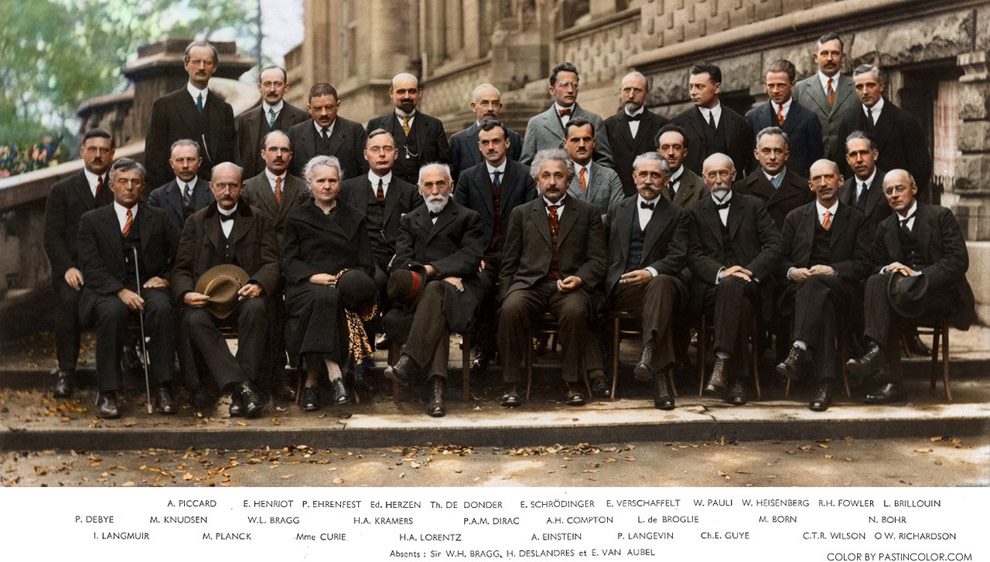

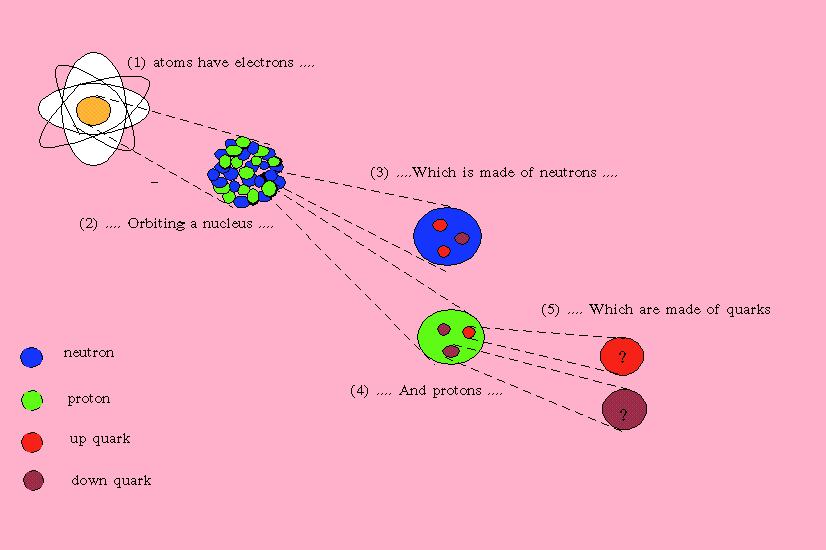
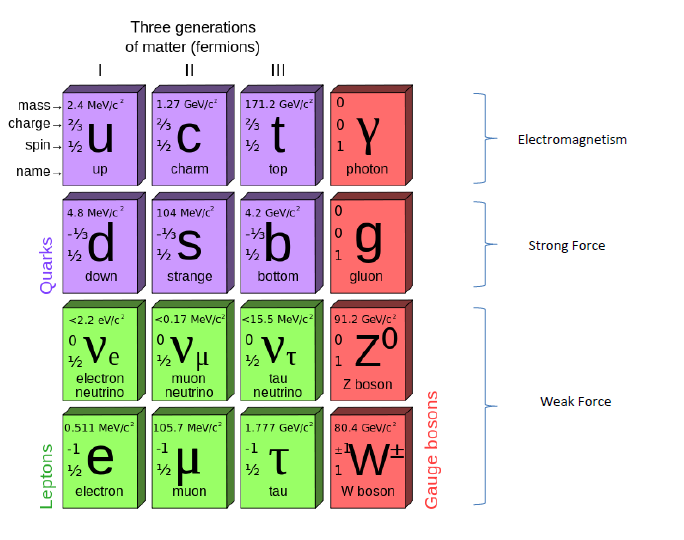

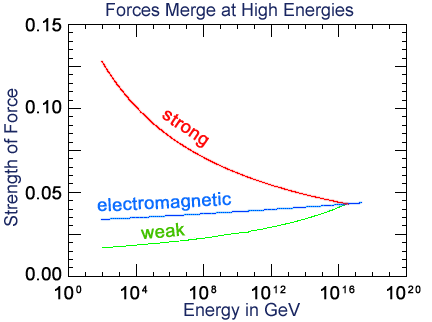
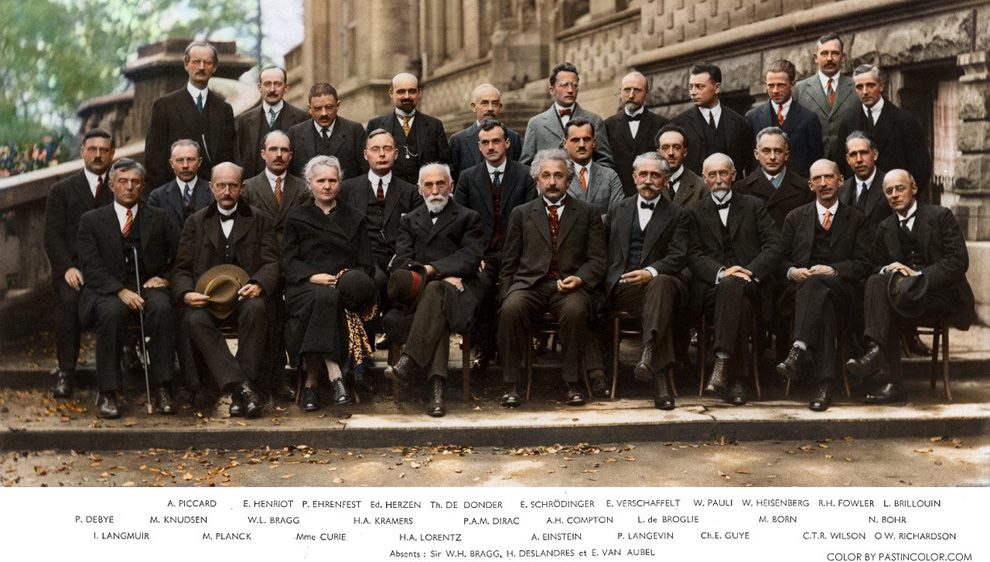
Hey, thank you for this article !! but can you clarify more this part
“Common sense makes us think that elementary particles like electrons for instance do not have an internal structure… but how can it move ? Well, the reason given with string theory is quite simple : because it is made of a huge amount of tiny strings, so small that even our most powerful microscope would not allow us to observe, and those strings are vibrating ! And so, the same way strings on a musical instrument vibrating at different patterns would create different sounds, these tiny strings vibrate at different patterns to produce a force creating different elementary particles, like quarks, photons, gravitons, etc.”
Thanks a lot !
“Big mistake in Science” as factor in decreasing validity and reliability of research
• We believe, the “big mistake” in seeking Theory of Everything (TOE) as the ultimate symbol of Science, rooted from the reality that so far within DIKW model we did not consider Universe as an psycho – somatic entity, a Universe with Consciousness factor since or even before the Big Bang (the birth of SpaceTime). Whereas “….the Universe knows something we don’t and it acts on cosmic scale…”
• We believe that (Nature) Knowledge which is Consciousness attributed, for the first time clarified as one of the fundamental structure or fabric of Universe beside Matter and Energy as well as having potential traits to be Independent to SpaceTime (IST) mostly dominant at quantum level contrary with Matter and Energy which are Dependent to SpaceTime (DST)
• Considering Consciousness is the attribute of Knowledge as our main postulate,” then from the very beginning, say it the Big Bang, Nature Knowledge becoming the third fabric as well as Energy and Matter. Within Universe evolution throughout 13.7 billion years, prominently we noted that Knowledge Management (KM) model framework as integrated collective tacit knowledge (collective mind brain as explicit knowledge) representing culture and value of people within organization could be strongly assumed as high-end Universe evolution model under consideration that it is in reality is the highest complexity structure in Universe. The intended KM model is our comprehensive Human System Biology-based KM (HSB_KM) model framework we have been developed since 2008 under consideration that “We are Knowledge Management (KM) – regulated by nature, and by nature we are Knowledge Management (KM) model” paradigm
• …To avoid or at least to minimize the assumption “what we can understand today it is all theoretical” as the “weakness” of Theoretical Physics, let’s try totally new within inverted paradigm, practical science (Knowledge Management / KM) applied to basic science (Physics) through Inverted Paradigm Method (IPM) within context of Nature Knowledge Theory ( see our K – base https://delicious.com/mobeeknowledge/natureknowledgetheory )
• Further, HSB_KM as well as its derivatives underwent reverse engineering process to be put as developmental research object treated with Inverted Paradigm Method (IPM) went beyond its original domain toward “the basic of the very basic study” even to quantum level. Practically it is the work to complementing High Energy Physics effort (see http://t.co/J3rTJW4a – “Hi Energy Physics vs Nature Knowledge Physics”)
• One of our outcome is Knowledge Value (KV) measurement , …. ……converting our Knowledge Management model framework or HSB_KM’s Knowledge Value (KV) relative
scoring ratio through Thurstone scaling technique toward KV measurement absolute scoring ratio applied to Nature Knowledge continuum as measurement initiated from KV = 10-38 (Planck Constant) CEF at quantum level applied to DEF boson force particle through macro physical level KV = 9.0 as Human maximum possible score toward KV beyond human to KV = infinite CEF. KV measurement is actually the act of “renormalization”, intended as one of the key factor of effort to unify the general relativity with quantum mechanics within one continuum parameter….. (see the “landscape of KV at http://t.co/pdI3lkuc )
• Linking up continuously through KV measurement between Quantum Mechanic domain with Classical Mechanic domain as desired by String theorist is one step effort in unifying quantum and relativity (see http://mobeeknowledge.ning.com/forum/topics/simple-math-vs-string-theory-vs-nature-knowledge-theory-on-linkin – “Simple Math vs String Theory vs Nature Knowledge Theory on linking up Quantum Mechanic and General Relativity” )